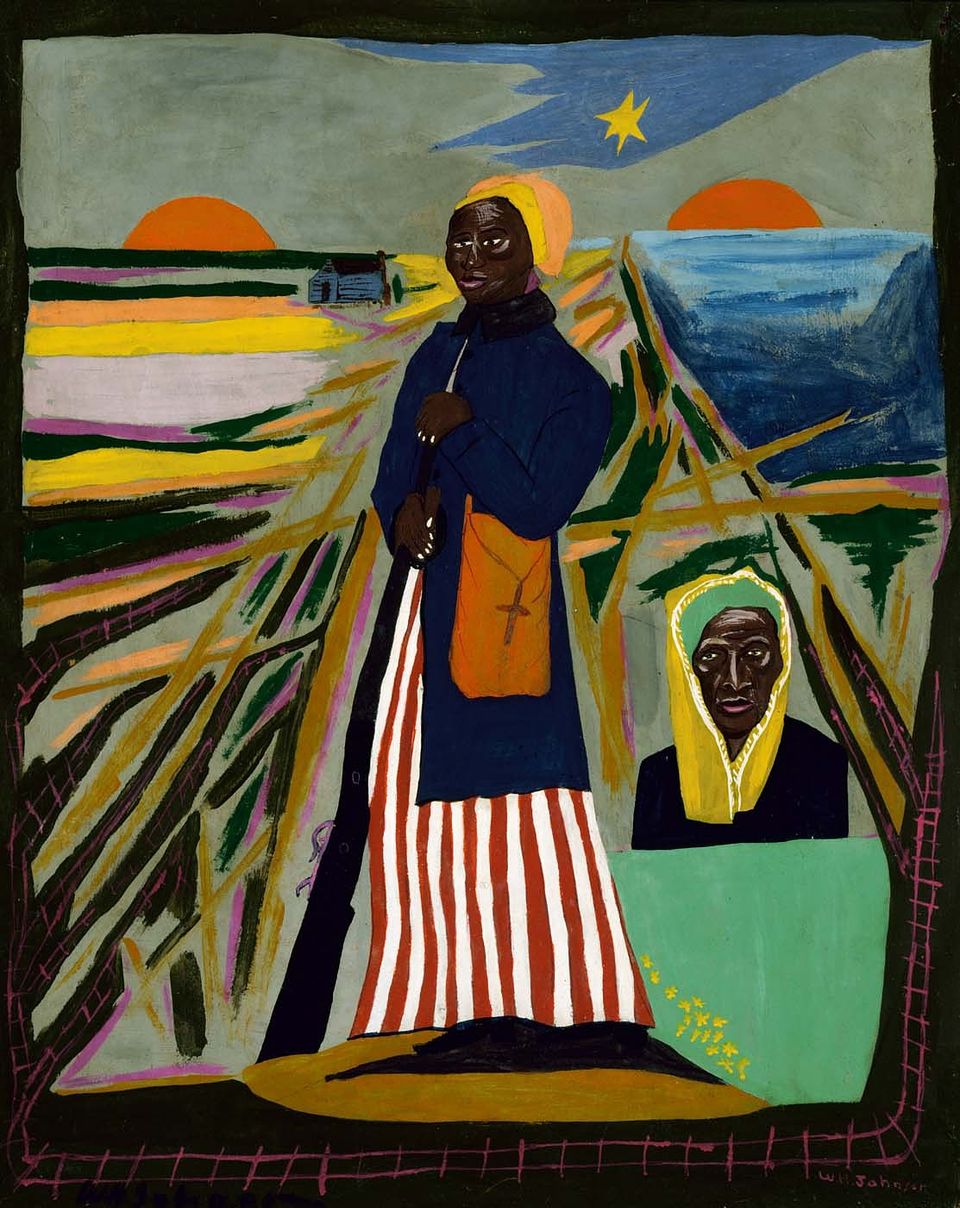Artwork Details
- Title
- Commodore Peary and Henson at the North Pole
- Artist
- Date
- ca. 1945
- Location
- Not on view
- Dimensions
- 27 5⁄8 x 35 1⁄2 in. (70.1 x 90.3 cm)
- Credit Line
- Gift of the Harmon Foundation
- Mediums
- Mediums Description
- oil on paperboard
- Classifications
- Subjects
- Waterscape — boat
- African American
- Object — other — flag
- Portrait male — Henson
- Portrait male — Peary, Robert Edwin
- History — exploration — North Pole
- Object Number
- 1983.95.54
Artwork Description
Johnson located Matthew Henson and Commodore Robert Peary in a landscape that attests to their greatest accomplishment---the discovery of the North Pole. The iceberg and ship behind them symbolize their arduous journey, the American flag, the nation for which they claimed victory. The two were an unlikely pair. In 1887 Robert Peary (1856--1920), a U.S. naval officer, hired Matthew Henson (1866--1955) to be his personal valet. By the time they planted an American flag on what they believed to be the North Pole on April 6, 1909, Henson was a co-equal explorer who had accompanied Peary on four earlier expeditions to the Arctic.
The 1908 to 1909 North Pole expedition was huge. More than fifty men, women, and children, most of them Inuit; 246 dogs; hunting equipment; coal; and seventy tons of provisions supported the venture. They traveled first by ship then on foot and by dogsled over the frozen land. Though in 1912 Henson published a book, A Negro Explorer at the North Pole, which told the story of the trip, his role was eclipsed by Peary's until the 1940s, when Congress awarded him and five others silver medals for their accomplishments.














